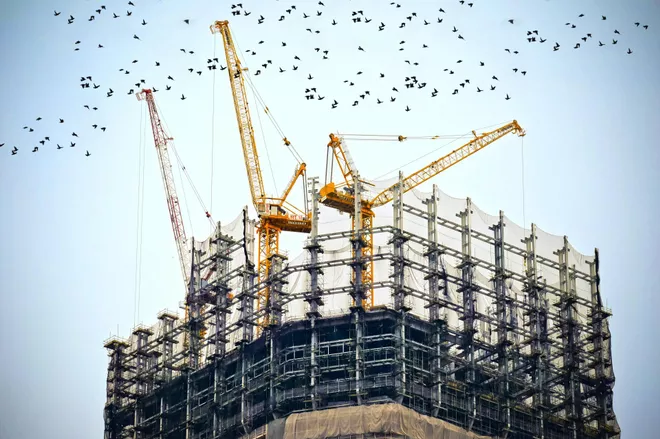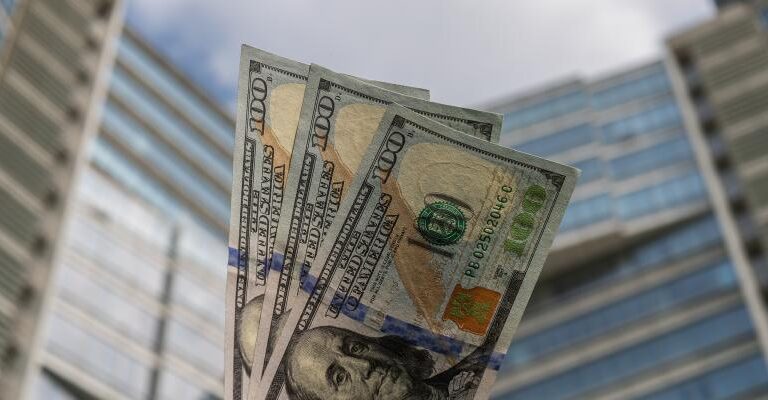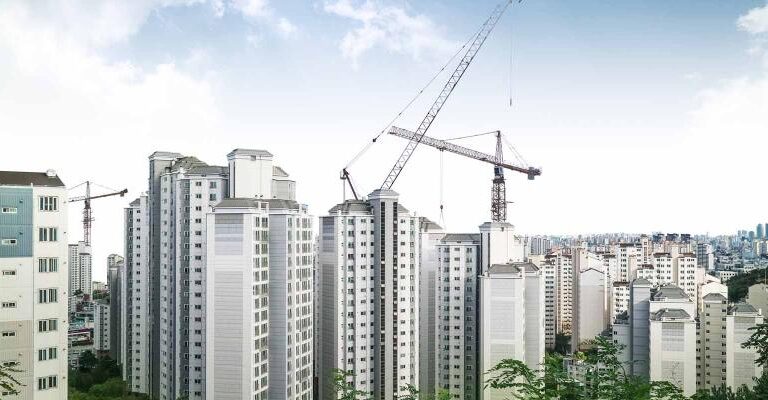Real estate debt investors have been enjoying favorable economic conditions for the last few years.
Despite the pandemic-fueled economic upheaval, money has been cheap and lately, conditions have been looking up — especially for investors placing bets on high-demand asset classes like multifamily and industrial.
Now, things are beginning to look grim.
U.S. inflation is at a 40-year high, gas prices are breaking records at $5 per gallon and on Monday the Dow Jones Industrial Average plunged 876 points and the S&P 500 ended the day in bear market territory — both indexes apparently spooked by looming interest rate hikes.
The Federal Reserve has tried to put a lid on inflation with several aggressive rate adjustments in 2022. That already seems to have slowed down the pace of real estate deals, but capital market experts told Bisnow this week that won’t be enough of a headwind to deter many investors.
“We’re in a weird climate at the moment, where sellers still have unrealistic expectations based on where values have gone over the past two years, and even more so the last nine months,” said Three Pillars Capital Group Managing Principal Gautam Goyal, whose Houston-based private equity firm specializes in Class-B and C multifamily communities.
With interest rates creeping up, fewer deals make sense, Goyal said.
Innovo Property Group, for example, recently backed out of an agreement to buy 452 Fifth Ave., an office tower in Midtown Manhattan, for $855M. The high-interest rate environment made the deal untenable for the investor, The Wall Street Journal reported, citing an anonymous source.
Deal volume has already slowed down, with brokers reporting that the buyer pool has shrunk dramatically, Goyal said. Lenders have tightened up their underwriting with lower loan-to-value ratios and requiring interest reserves, making it more difficult to make deals work.
“The deals that will be squeezed will involve those assets that traditionally trend towards a lower cap rate, as the spread between interest rates and the cap rates narrow,” said Adam Johnson, NAI Hiffman executive vice president of office services.
That dynamic will provide an advantage to larger funds that have cheaper access to capital and cash, which will keep the market going, Johnson noted, though he says he anticipates a slowdown toward the end of the year and into 2023 as interest rates increase and flatten out. For now, however, volume should remain relatively high through the summer and fall as investors race the rate increases.
Nationwide, commercial property sales, including multifamily, came in at $39.4B in April, according to MSCI Real Assets data. That is down 16% compared with the same month in 2021, and coming on the heels of 13 consecutive months of increases, the company found. Office, industrial and senior housing assets led the decline, though sales of retail and multifamily continued to rise.
“What interest rates will do in the next few months hasn’t happened in recent history,” Goyal said. “A dramatic increase in rates will impact those buyers who bought at the top of the CRE cycle. The same goes for office space, which was already struggling with lower occupancy.”
In March, the Federal Reserve approved a quarter-percent increase for its key interest rate, the first since December 2018, and after nearly a decade at hovering near zero, raised the rate again by half a percent in May. The yield on 10-year Treasury notes, which is a benchmark for commercial mortgages, has nearly doubled so far this year.
The central bank will probably hike its key interest rate by as much as three-quarters of a percent in June, with rising chances of a half-percent move in September, according to a Reuters poll of economists in early June.
Borrowers seeking new commercial mortgages have already encountered a number of changes due to these projected rate hikes, Marcus & Millichap explained in its most recent Capital Markets Special Report.
“Forward interest rate projections are aggressively steep, resulting in higher interest rate cap costs and high swap spreads,” the report said. “Securitizations following last March’s hike are only getting started, but initial feedback is that spreads are nearly even, despite a greatly increased base index rate.”
If this trend continues, Marcus & Millichap reports, interest rates will move back toward the mean (that is, a return to “normal,” where it hasn’t been in 20 years) and that makes assumable debt that was originated over the past few years incredibly valuable to the next buyer, even if rents quit rising so rapidly or a recession puts a dent in demand.
“We’re reaching a place in the benchmark interest rates that’s causing investors to reconsider some of their return assumptions about the cost of debt financing,” said Chatham Financial Managing Director Rob Mangrelli, who works on the firm’s real estate hedging and capital markets team. “There’s been a rapid repricing.”
Considering the latest inflation numbers — the Consumer Price Index was up 8.6% in May for the year — the market is pricing in roughly another 2.25% of increases for the rate by the end of the year, Mangrelli said.
That part of the economic climate is relatively predictable, Mangrelli said. Less so is the future rate of inflation itself, and that might have as much of an impact on CRE investment as rising interest rates.
“Business is always injured by uncertainty,” Mangrelli said. “That uncertainty paralyzes effort. Inflation is the worst of all business uncertainties — it is uncertainty about how much a dollar is going to buy.”
The slowdown will be more than just a matter of rising interest rates, according to Hudson Realty Capital Managing Principal Richard Ortiz, but also a matter of seller psychology.
“Sellers still have valuations from six months ago when cap rates were still historically low,” he said. “When translated to today’s pricing, only sellers who absolutely have to sell will do so. Most sellers will wait until they can get a better price.”
As the gap between bids and asks widens, CRE transaction volume will decline, NYU Schack Real Estate Institute Clinical Assistant Professor Constantine Korologos said.
Deals that worked with cap rates that were originally applied are not getting the financing expected because the higher rates are driving lower debt service coverage ratios, and loan proceeds are being cut, Korologos said.
“I don’t believe that any property types are immune,” Korologos said, though he noted there is a good deal of variation even within property types.
“Apartments in strong employment growth markets may not feel the stress as much as a large gateway city market,” he said. “Industrial has seen significant investment demand but could be subject to the same debt cost issues.”
Even so, multifamily has been particularly resilient during times of market turmoil and dislocation, Goyal said, with investors still quite eager for the property type in many cases.
“We continue to see momentum in the multifamily and industrial sectors despite the increase in interest rates over the last few months,” PGIM Real Estate Head of U.S. Debt Originations Melissa Farrell said.
“We think this momentum can be maintained given there is significant tenant demand across markets for units and space and significant demand from both equity and debt investors,” Farrell said.
There are also still some broader tailwinds behind CRE investment besides the strength of certain property types. While development pipelines are strong for now, the cost of money could, along with rising construction costs, put a damper on even hot development markets, such as apartments.
If development drops but demand among renters stays high, that would mean existing properties would be all the more valuable, even in a high-interest rate environment.
“Strong demand could still support some new development, but it will have to be very strong,” Korologos said. “Higher costs will also cool supply growth, providing a more favorable environment for newer existing high-quality assets.”
Korologos added that higher interest rates can’t be viewed independent of the other economic conditions — inflation, supply chain challenges, energy costs and geopolitical risk.
“They have a collective impact that could create broader market and asset sector distress,” he said.
Equity isn’t likely to be deterred by higher interest rates, as long as demand and rents are rising.
“There remains something over $150B in dry powder available to private equity investors in real estate, and I’d posit that they’re not going to sit on that cash,” Mangrelli said. “They’re going to put that money to work if they can, and that will provide some level of backstop on activity.”
There also remains strong demand for commercial properties from retail investors, such as high net worth individuals, Mangrelli said.
“Some of the large alternative asset managers have clearly shifted their strategies over time, and are looking for some level of inflation protection,” Mangrelli said. “Wealth is going to seek asset classes that might perform better in a higher inflation environment.”
Written By: Dee Stribling






